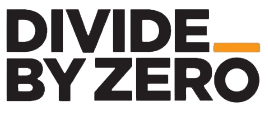Pioneering the Future of Automotive Engineering
The Benefits of 3D Printing for Lightweight Structural Components
1. Superior Strength-to-Weight Ratio:
• Optimized Material Use: 3D printing allows for the creation of parts with complex internal geometries, such as honeycomb or lattice structures, which provide high strength while minimizing weight.
•Example: Chassis reinforcements made using 3D printing can maintain or exceed the strength of traditional materials while significantly reducing overall vehicle weight, leading to better fuel efficiency and performance.
2. Material Optimization:
• Advanced Materials: The ability to use high-performance materials such as CF (carbon fiber) and GF (glass fiber) composites enhances the durability and strength of the components. These materials are lighter and stronger than traditional metals.
•Example: Body panels printed with carbon fiber composites can offer exceptional impact resistance and durability while being lighter than aluminum or steel panels.
3. Design Flexibility:
• Complex Geometries: Additive manufacturing allows for the creation of intricate designs that are impossible or cost-prohibitive with traditional manufacturing methods. This opens up new possibilities for aerodynamic optimization and aesthetic customization.
•Example: Roll cage components can be designed with complex curves and optimized for specific stress points, enhancing both safety and performance.
Addressing Common Objections with Divide By Zero Technologies
Objection: 3D Printed Parts Lack Durability for Structural Use
Objection: Cost of 3D Printing Technology
Objection: Limited Production Speed
Sparking New Ideas: The Future of 3D-Printed Structural Components
The potential applications of 3D printing in automotive structural components are vast. Here are some innovative ideas to consider:
•Integrated Functions: Embedding sensors or electronic components directly into structural parts to enable real-time monitoring and diagnostics.
•Modular Construction: Developing modular structural components that can be easily replaced or upgraded, enhancing vehicle customization and maintenance.
•Sustainable Manufacturing: Using eco-friendly materials and processes to produce lightweight, high-strength components, aligning with the industry’s push towards sustainability.


